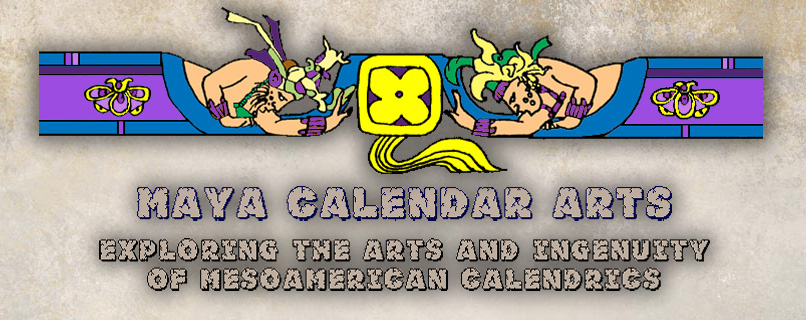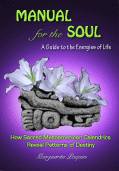Book reviews and endorsements
From Jean-Philippe Mul, Western and Maya astrologer, project director of the Mandãla (www.the-Mandala.net), from Amazon.com
Time is alive.
“Manual for the Soul”, despite its New Agey sounding title, is a serious work of reference (700+ pages): a comprehensive synthesis based on the mind-boggling research (cf. “Breaking the Maya Code”) undertaken over the last century by academic scholars and independent researchers on the topic of the Mesoamerican Sacred Calendar. Backbone of the Maya Calendar, backbone of all Mesoamerican cultures (Olmec, Zapotec, Maya, Mixtex, Aztec, …).
Combining mathematical precision with archetypal power, the Tzolkin (as it is commonly known) gives shape to our otherwise unformed notion of Time. Each of the rotating 20 signs and 13 numbers (a complete cycle of 260 days) is a sacred living entity. The 20 signs are especially sacred ― for our Mesoamerican forebears, they were gods created and named before even the world came into being. They have been rising, day after day, since Time began…Each embodies a specific set of energies, which the bulk of this book sets out to map and illustrate.
A chapter is dedicated to each. First elaborating on the mythological, cosmological and symbolic underpinnings within the various Mesoamerican traditions (the Mayas get a big piece of the pie), with additional cross-cultural references from traditions worldwide. For this reviewer (astrologer, and a researcher himself), this section was an indispensable and fascinating read.
Each chapter moves on to illustrate how the sign energies manifest in both personal history (1800 biographical entries) and collective history (1500 world events). Perusing these 2 sections can be done in a non-linear, non-focused manner; in other words, at leisure. In the biographical sections, this reviewer found some descriptions to be overly subjective, or at times would have cited different biographical elements. Nevertheless, countless exciting discoveries were made and that section remains a favorite.
For many years now, this reviewer has been gathering and studying the best books to be found on the subject of the Tzolkin, and Maya Calendar in general ― a subject unfortunately too often appropriated and distorted. 9 years in the making, “Manual for the Soul” has proved indispensable for his deeper comprehension of the day-sign energies. It will remain a reference and sits enthroned, unchallenged, at the top of the pile. It is a perilous position (book is heavy) ― yet a position it seems `destined’ to hold for a long `time’ to come.
From John Green, Editor, The Astrological Journal (UK) , January/February 2011:
Everyone is talking about the Mayan calendar at the moment, and if it’s something you are interested in here’s Manual for the Soul to explain what it’s all about. Rather than falling into the media hype surrounding the calendar, this is a scholarly work that puts the ideas into a larger context with mythological, historical and technical aspects of the system, explored from the perspective of history and personal biography.
It’s a big book, over 700 pages, and there is a huge amount of information contained within. It goes into great depth on the subjects of Mesoamerican timekeeping, mythology and cosmology, the various powers assigned to each Daysign, along with a handy reference section. The references include tables, so that you can easily work out which of these signs your birth date assigns you to. With the help of the author I found out what energies are linked to me in this system. The energy combination ascribed to me could be translated as “the structuralising or crystallising of restorative vitality”. I hope that’s true.
For me, the finding out of your own birth information was less interesting than the great mythological descriptions of each Daysign power. There are wonderfully well researched descriptions of the myths here, along with numerous footnotes which bring each of these energies alive. In many ways this is an anthropological work, and in synthesising this content it does a remarkable job.
This book also goes into over 1500 significant events in world history along with over 1800 famous people, and reviews them through this calendar system. All in all, it makes for a fascinating read. The book isn’t for everyone, of course, but if you are interested in the Mayan calendar and want a balanced and thoughtful read rather than the more extreme ideas currently being bandied about then it is well worth getting hold of a copy of this book.
From Mary Plumb, Book Review Editor, The Mountain Astrologer, Feb./Mar. 2011
Marguerite Paquin, Ph.D., is an educator with a long interest in “the arts of indigenous peoples — the arts that reflect deep cultural traditions”. She relates her own personal “call” towards the ancient civilizations of Mesoamerica in the Preface to her remarkable book. She tells of her interest in “the perennial concept of the daimon, which encodes the individual with a calling”. This idea echoes throughout Manual for the Soul, which purports to show How Sacred Mesoamerican Calendrics Reveal Patterns of Destiny.
One complexity that anyone faces at the beginning of an investigation into what is generally known as “Maya timekeeping” is the issue of calendar correlations — figuring out how to adjust ancient dates to correspond to current calendar time. The author describes various calendar correlations in the Preface and explains why she has chosen the system known as the “283 count” in her research.
Paquin introduces her work with a broad inquiry into “Time, Soul, and Destiny”, the title of Chapter One, where she find parallels between Mesoamerican concepts and the ideas of James Hillman, Plato, Carl Jung, Rudolf Steiner, and many others.
Chapter Two, “Mythology and Cosmology”, describes the pre-Columbian Mesoamerican worldview, which was oriented to the cosmos — “a realm permeated with divine energies, where the world of the gods directly influenced daily activities on the earthly plane”. The author covers many notions in this chapter, including jal, or “transformational change” which “is so crucial to evolution”. She connects jal to qualities of the “hero’s journey” articulated by Joseph Campbell and others. There is also ch’ulel, “the eternal essence of creation”, and itz, “the carrier of ch’ulel, divine soul-esence”. Itz can be found in some tangible substances, such as milk, tears, sweat, and semen. The nawal (which parallels the Greek idea of “daimon”) is connected to the human being from birth and is essentially seen as “assistance for helping the human soul to carry out its purpose”. This invaluable chapter also introduces many of the principal Aztec and Maya deities who “regulate and oversee the unfolding of time”.
The next chapter covers the 13 Sacred Numbers, which are called the “Numerical Powers”. Paquin takes the reader more deeply into Mesoamerican cosmology, as these sections thoroughly examine the meaning of the numbers. She includes languages variants, key words, and symbols and gives historical events that occurred on days related to each number. (These events go through 2009.)
The overall purpose of the book is “exploring the working and manifestations of the energies of the Tzolk’in — the basic 260-day Sacred Count which incorporates thirteen numerical forces in combination with twenty foundational energies”. These 20 energies are the book’s main focus and comprise Part Two, Daysign Powers. Each of the 20 daysigns has an extensive chapter, which begins with an epigraph (drawn from various sources) and features a pronunciation guide, symbols, glyphs, key words and ideas, language variants, and abundant corresponding historical events.
There are Traditional Conceptions for each daysign (which include drawings and glyphs); Historical Manifestations (a multipage listing of events that have occurred on that day); and Personal Manifestations (hundreds of prominent people born on each day and lively keynotes of their biographies as they pertain to the key motifs of the daypower under discussion).
I should make it clear that, although this book is the fruit of many years of research, it is also a living guide. There are tables to find your numerical power, daypower, and the trecena (described in Part Three, Other Dimensions); all these combine to form your particular “destiny code”, connected to your birth date. The author’s blog on the whitepuppress Web site offers updates as events transpire, making this a real-time work in progress.
Manual for the Soul is an accessible and yet scholarly text: It provides a Glossary of Mesoamerican Timekeeping terms; Appendices (including a Summation of Daysign Symbols, Date Converter tables, and more); extensive Endnotes for each chapter; Illustration sources; a 9-page Bibliography and Recommendations section; and four comprehensive indices (Names and Birthdates, Deities and Daysigns, General, and Historical).
I’ve only skimmed the surface of this fascinating and gracefully written book that is densely packed with ideas, concepts, and historical and contemporary references. Marguerite Paquin opens a gateway into a compelling world and warmly invites readers into this sacred timekeeping tradition.
Endorsements
“ . . . deep, insightful, and wonderful . . . ” John Major Jenkins, Director of the Center for 2012 Studies and author of The 2012 Story: The Myths, Fallacies, and Truth Behind the Most Intriguing Date in History
“ . . . a fine job of synthesizing the anthropological literature”, Dr. Edwin Barnhart, Director, Maya Exploration Center, Austin, Texas
“ . . . the most incredible book I’ve seen in years. It’s like the Cosmos & Psyche of Mayan
astrology. 744 pages of incredible wisdom.” Gary P. Caton, internationally acclaimed astrologer, www.dreamastrologer.com
“Marguerite Paquin’s Manual for the Soul is a must read for anyone with an interest in the mysteries of Maya Calendrics. This extremely well researched and artfully crafted book enables even the most novice readers to understand this incredibly complex and multi-layered subject. Her book offers the western mind a way into advanced Mesoamerican timekeeping and shows how the energies of the days can be used to accurately predict and describe events, personalities, and predilections.” Karen Lipsett-Kidd, Crystalworks co-owner, Vancouver, B.C.
“An extraordinary book written by an exceptional woman . . . her wonderful presence shines through as a light to the world.” Dawn Muncaster, LIGHT OF THE SOUL, Trans-Personal Astrological and Spiritual Counsellor, speaker, teacher, writer.
“ . . . my favourite book ever! Even just the energy off the book . . . ‘sacred energy’.” Diane Charlene Armitage, Whispering to the Spirit of Horses

 An in-depth analysis of the energies encoded in the Sacred Maya Calendar and the impact of those energies on daily life.
An in-depth analysis of the energies encoded in the Sacred Maya Calendar and the impact of those energies on daily life.